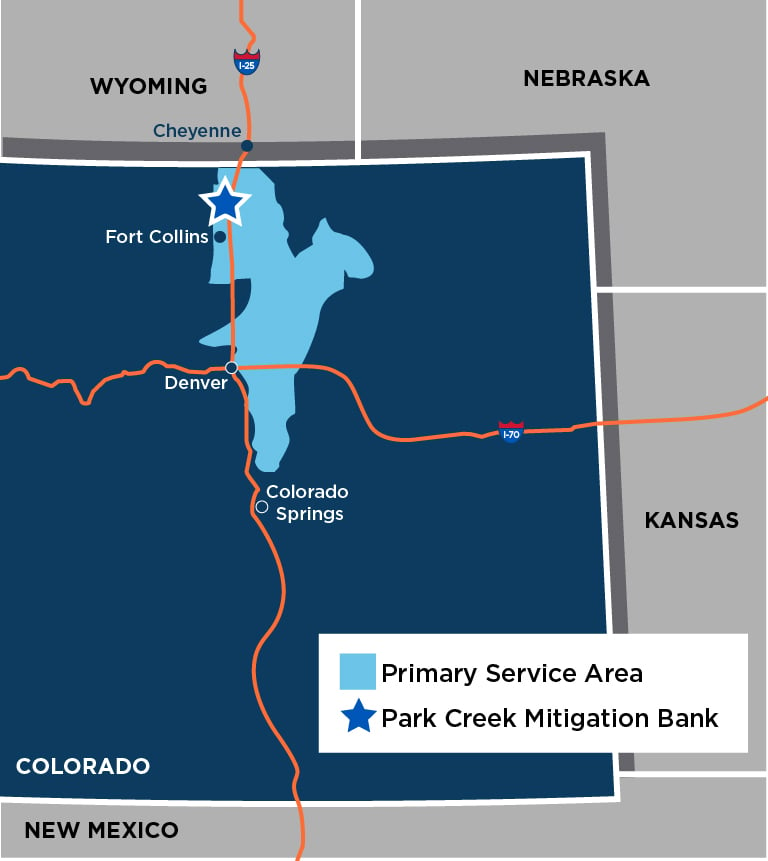The Park Creek Station Wetland Mitigation Bank preserves, restores and creates wetlands for the purpose of providing compensatory mitigation credits in advance of unavoidable impacts to wetlands or other aquatic resources.
The 240-acre mitigation bank site in Colorado was selected because there is excellent and unique potential to improve wetland and riparian functions on the site that has significant natural, cultural and open space values. This type of site helps consolidate small, fragmented wetland compensation projects into large contiguous preserves, which have much higher ecological values.
The site has excellent restoration potential of wetland and riparian resources of the type that are increasingly scarce along the northern Front Range, where most streams of this sort no longer have their natural flows or follow their natural stream course. Activities such as regrading to restore and re-create wetlands mimicking a historic floodplain, the removal of grazing pressures, invasive species removal, and replanting with native species have been designed to maximize the ecological value created.
The establishment of Park Creek Station Wetland Mitigation Bank is expected to result in:
- Creation of emergent wetlands.
- Restoration and enhancement of existing wetlands.
- Additional high-quality buffers.
- Sitewide natural resource management program.
- Substantial functional uplift to the Park Creek system.
- Restoration and conservation of landscape-level wetland diversity, including functional uplift of multiple hydrogeomorphic and vegetation community types.
- Excellent habitat interspersion functions and reference-standard buffer conditions.
- Potential refugia for sensitive and listed species.
- Increased habitat potential for state- and federally listed species.
- Restoration and management of multiple levels of biological diversity.
- Long-term management and biological security in perpetuity.

